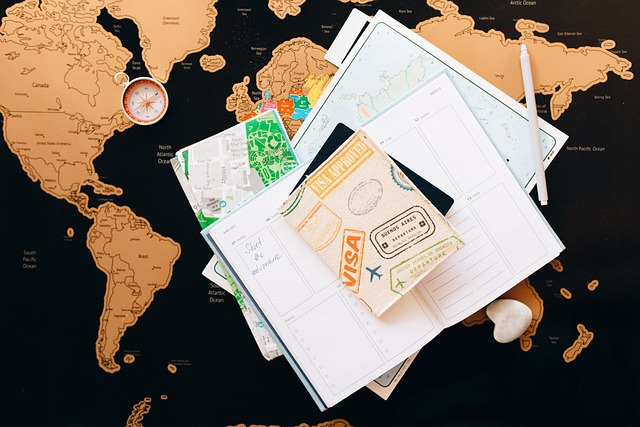Rapid Translate Team
There are a few key steps to take to notarize a translated document. You want to have a qualified translator complete the translation then find a notary public. After that, bring both the original and translated documents to the notary and sign the document before the notary. From there they will notarize and seal the translation. Keep the notarized translation with the original for legal use.

Table of Contents
What Does Officially Notarized Translation Mean

An officially notarized translation is crucial to establishing translated documents’ authenticity and legal validity. This process involves certifying translations through a notary public, which increases their recognition and acceptance in official and legal settings. Here are some things to consider when it comes to notarized translations:
- Notary Verification: A notary public, a legally authorized officer, verifies the accuracy and authenticity of the translation.
- Identity Confirmation: The notary ensures the identity of the translator or the person providing the translation.
- Seal and Signature: The notary adds their official seal and signature to the translated document, indicating its validity.
- Legal Acceptance: Legal and official proceedings widely accept notarized translations.
- Immigration Documents: These are often required for immigration documents like visas and green card applications.
- Court Proceedings: Vital for legal documents presented in court, ensuring their accuracy and trustworthiness.
- Government Submissions: Necessary for documents submitted to government agencies for various purposes.
- Academic Transcripts: Academic transcripts and certificates are required when applying to foreign universities.
- Real Estate Transactions: Notarized translations play a role in real estate deals, especially for international buyers.
An officially notarized translation enhances the credibility and legal validity of translated documents. The presence of a notary public guarantees accuracy and authenticity, making such translations invaluable in immigration, legal, academic, and business settings.

How Do I Notarize a Document in Another Language
Notarizing a document in another language involves several steps to ensure its legal validity. Here’s a comprehensive guide:
- Choose a Qualified Notary: Start by selecting a notary public authorized to perform notarizations in your jurisdiction and language.
- Provide the Original Document: Provide the notary with the original document in its original language.
- Translation Preparation: Prepare a translated version of the document. Ensure it accurately reflects the content of the original document.
- Bring Both Documents: Present the original document and its translation to the notary.
- Verify Your Identity: Be prepared to verify your identity to the notary. Typically, this requires presenting a government-issued ID like a passport or driver’s license.
- Translator’s Affidavit: If you’ve used a professional translator, they may need to sign an affidavit attesting to the accuracy of the translation.
- Notary’s Assessment: The notary will assess both documents, ensuring they correspond and that the translation accurately reflects the original content.
- Notary’s Seal and Signature: The notary will add their official seal and signature to the original and translated documents if everything is in order.
- Notary’s Certification: The notary may provide a certification statement indicating that they’ve witnessed the accuracy of the translation.
- Record Keeping: The notary will maintain a record of the notarization in their official journal.
Ensure you work with a notary familiar with the language and specific requirements of notarizing documents in that language to avoid any complications.

Translate Your Document on Rapid Translate Today!
Understanding the intricacies of notarized documents is only the beginning. Having a precise and accurate translation is the foundation of this process. Don’t risk the authenticity of your important documents with subpar translations.





